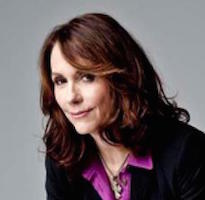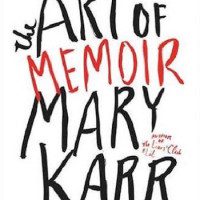Like any other writer worth her salt who has overshared about her life as a means of paying the bills, I have read the usual how-tos: Stephen King’s On Writing. Anne Lamott’s Bird by Bird. Adair Lara’s Naked, Drunk, and Writing. Betsy Lerner’s The Forest for the Trees. From King, I learned to eradicate superfluous adjectives and adverbs (or at least try to). From Lamott, I learned about character development, scene-setting, and plot. From Lara, I learned how to focus and construct a memoir. From Lerner, I learned what might be in store for me should I ever pass into the realm of writer-with-a-book-contract.
When I saw that Mary Karr was coming out with her own book on memoir, my heart stalled and then started again, creating a butterfly flurry of excitement in my chest. I marked it down as a Book That Must Be Read. After all, as the author of The Liars’ Club, Cherry, and Lit, Karr is the mother of modern-day memoir.
So I felt momentarily disoriented when I finally began to read The Art of Writing. Where were the clearly delineated sections on structure and scene-building and story arc? Where were the outlines? The unbreakable rules?
Eventually I had to concede that Karr did not title her book The Highly Detailed Topographical Map of Memoir. While she does offer insight on structure, voice, research, and other aspects of the writing process, where Karr excels is in revealing the artistry of the form, those things that cannot be bound by hard-and-fast rules. She highlights memoir’s ability to shine truth upon events obscured by memory’s shadows. She makes her readers fall in love with memoir all over again and feel excited to tackle the form for themselves.
Truth is the through line of Karr’s book, the thing that preoccupies her most. Timeline? Chronology? Who gives a crap? For Karr, every aspect of memoir-building comes back to a single question: is this the best way to reveal the truth? Her chapter titles include “The Truth Contract Twixt Writer and Reader,” “Hucksters, the Deluded, and Big Fat Liars,” and “The Road To Hell Is Paved with Exaggeration.” Even in chapters that seem to be about something else, Karr turns the focus to veracity. In the chapter about voice, what she is really forcing readers to ask is: am I being my truest self? Or am I pretending to be someone else? In “The Past’s Vigor,” she acknowledges how slippery memory can be, and how difficult it can be to find absolute truth. But still, she is adamant that getting as close to the truth as possible is essential.

Because of Karr’s insistence on truth, the book is always circling back on itself. In chapters that are presented as brief meditations on physicality and detail and tone and interiority, Karr leans in close to the reader, grasping his or her hand, whispering urgently of accuracy and authenticity above all else. She repeats herself to ensure the reader gets it.
The only break in this cycle occurs in the chapters wherein Karr focuses on the memoirists she admires the most: Vladimir Nabokov. Maxine Hong Kingston. Kathryn Karrison. Michael Herr. In these chapters she mimics the memoir seminar at Syracuse she has taught for 30 years, giving the reader glimpses of the curriculum that has produced such memoirists as Cheryl Strayed and Keith Gessen. But even as she points out the tics and distinguishing characteristics that make these memoirists so successful, she seems to be admonishing the reader not to emulate them. Budding memoirists should cultivate their own voice.
I admire Karr’s voice. I was hungry for more of it, and for the insights into her process that only she can provide. So I was thrown when, more than halfway through Karr’s book, she writes, “The trusty literary advisers I call my Kitchen Cabinet have warned me off spending time here on my own processes. Maybe any writer who yaps about her work outside brief interviews comes off as a car salesman.” I was disappointed to see that Karr might deprive the reader of the secrets only she could tell, the raw magic that helped her create her own books, develop her own voice.
Luckily for me, Karr proceeds to write about her experiences negotiating the landmine terrain of writing about one’s loved ones. And she continues to weave her own experiences throughout the book, touching upon issues such as how long she took to come into her writing voice, how her perspective on past events shifted over time, and how she learned to balance out physical details with emotional insight.
If you are a writer looking for a roadmap, there are other books that would better serve you. Karr is smart enough to avoid writing a book that has been written before. But if you are looking for a way in, a way to find your own truth and bring it to life on the page, Mary Karr has your back.




